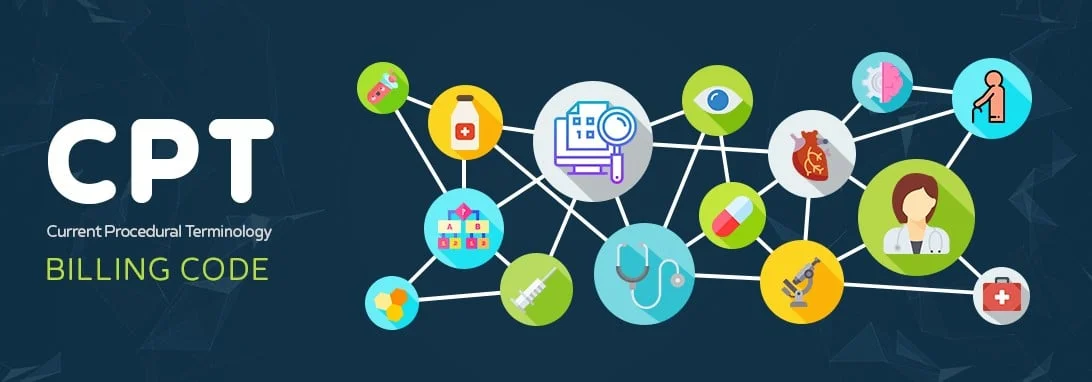Medical CPT Coding are codes that you and other medical professionals and laboratory personnel use to document the medical services and procedures you provide to patients. CPT stands for Current Procedural Terminology, and the five-digit codes are recorded by medical billing specialists to identify medical services and process laboratory billing claims. Each unique code corresponds to a designated service, translated into a numeric, or alphanumeric code, depending on the procedure or service. Medical CPT coding is divided into three different categories, simply named Category 1, Category 2, and Category 3.
Understanding CPT Codes
CPT codes are a universal language used to report and identify medical procedures and services. They are used by healthcare providers, insurance companies and government agencies to communicate and get paid. Developed and maintained by the American Medical Association (AMA), CPT codes are updated every year to reflect changes in medical practice and technology.
These codes cover a wide range of medical services including surgical procedures, diagnostic tests and evaluation and management services. They help track healthcare utilization, identify services to bill and gather statistical information about patient populations. Using CPT codes ensures medical services are reported accurately and consistently which is key to getting paid and quality improvement.
History of CPT Codes
The journey of Current Procedural Terminology (CPT) began in 1966 when the American Medical Association (AMA) published the first edition. The goal was to create a universal language for reporting medical procedures and services. Over the years CPT has evolved to keep up with medical technology and practice.
In 1970 the AMA introduced a 5 digit numeric coding system which is still the foundation of CPT today. The 4th edition in 1977 introduced a system for periodic updates so CPT codes would stay relevant and current in a rapidly changing medical world.
In 1983 a major milestone was reached when the Centers for Medicare & Medicaid Services (CMS) adopted CPT as part of the Healthcare Common Procedure Coding System (HCPCS). This cemented CPT’s status as a standard for reporting medical services in the industry.
CPT Code Structure and Format
CPT codes are 5 characters long and can be numeric or alphanumeric. This structure and format is designed to be clear and concise for reporting medical services. The 5 characters of a CPT code are broken down into 3 categories:
- Category I: These codes describe individual medical procedures or services provided by qualified healthcare professionals. They are 5 digit numeric codes and cover a broad range of medical services from surgeries to diagnostic tests.
- Category II: These are called supplemental tracking codes or performance measurement codes. They are used to collect data on quality of care. They are 4 digit numeric codes followed by the letter F. They help track performance and outcomes for quality improvement.
- Category III: These are temporary tracking codes for new and emerging technologies. They are 4 digit numeric codes followed by the letter T. They are used to collect data during the FDA approval process or to support widespread use of new technologies.
The structured format of CPT codes allows healthcare providers, insurance companies and government agencies to communicate and get paid accurately. This standardized coding system is key to reporting medical services accurately.
Category 1 CPT Codes
Category 1 CPT codes correspond to specific procedures and services offered by medical providers and laboratories. Many medical coders focus on and most frequently use these codes because it’s one of the more important categories of the three. Category 1 is divided into six different sections, which consist of the following:
- Evaluation and Management
- Anesthesiology
- Surgery
- Radiology
- Pathology and Laboratory
- Medicine
Smaller details or services are also documented and coded. For example, extra materials used, such as sterilization or drugs could be coded. Along with codes, come modifiers. Modifiers are two-character extensions (usually numbers) added to the end of a CPT code to provide additional information about the services or procedures. These modifiers are essential to successful laboratory billing because they provide details that insurance companies need to approve claims.
Category 2 CPT Codes: Performance Measurement Codes
Category II codes, also known as Category 2 CPT Codes, record extra information provided by you. These codes never replace Category 1 or Category 3 codes; they simply provide supplemental information. For example, extra recorded information could be in regard to patient management, patient medical history, and follow-ups. There are numerous details you could include with Category 2 CPT codes, but those are just a few examples. In Category 2, the alphanumeric codes always end in “F,” to ensure they are categorized correctly. These (and all the codes in the other categories) are organized in very specific classifications based on the information or details given by providers.
Category 3 CPT Codes:
Category III codes, also known as Category 3 CPT Codes, are designated for new and developing technologies and services. Category 3 is made up of temporary codes for emergent and experimental services. They help track the best emergency medical procedures for health services and the government. Many of the Category III codes eventually get reclassified as Category I, but only after the CPT Editorial Panel approves the codes.
The codes in Category III are alphanumeric codes that always end in T. Many of the codes within these three categories are continually updated, revised, and even discarded if they’re not used or relevant. To ensure you receive the maximum reimbursement for services provided, you need knowledgeable laboratory billing specialists who stay current on changing CPT codes and understand the importance of accurate coding.
The certified medical billing specialist at Medcare MSO specializes in the unique aspects of laboratory billing and changing CPT codes. Accurate and timely billing practices are essential for labs, and our services are tailored to each client to ensure maximum reimbursement and success.
